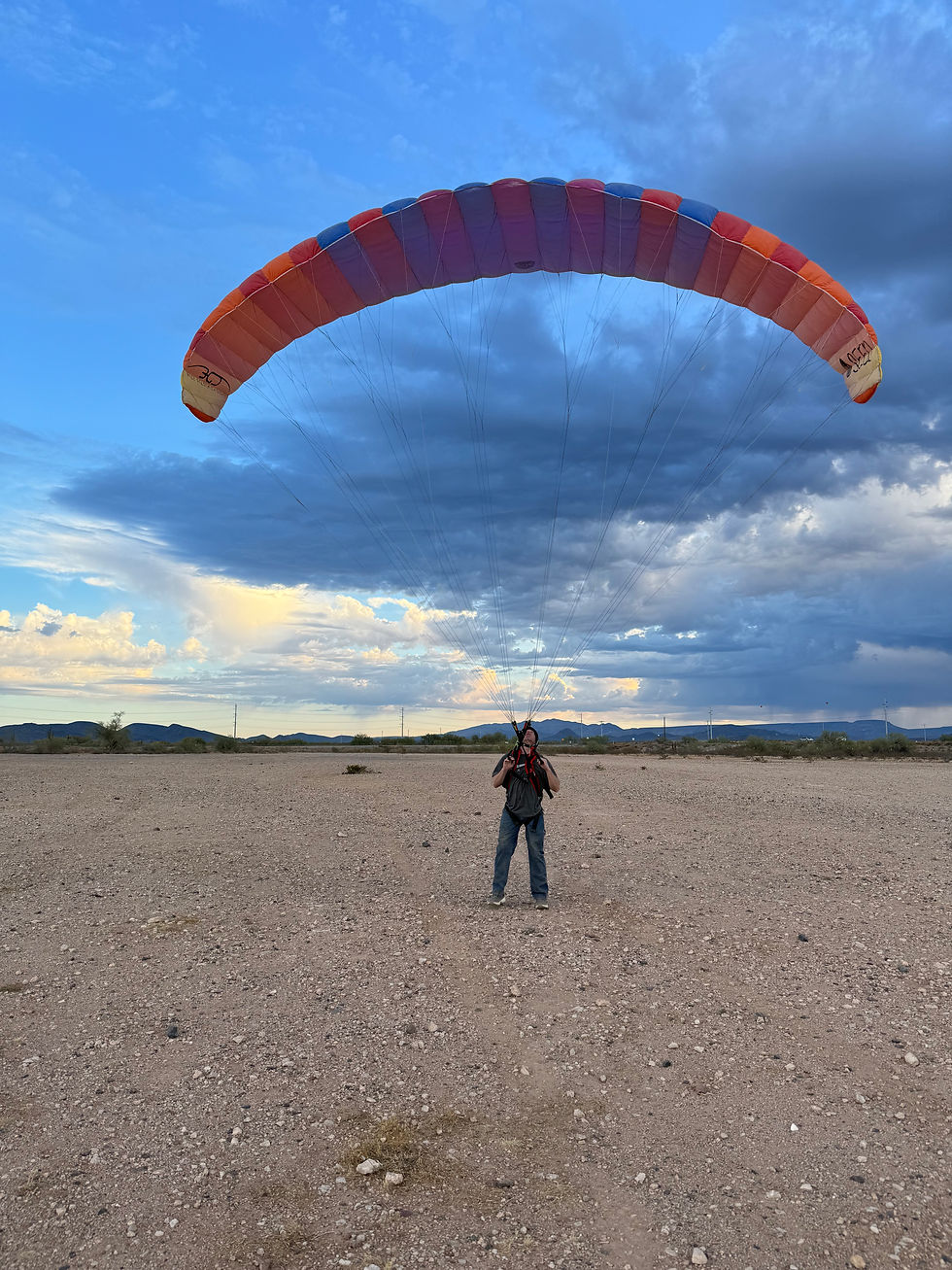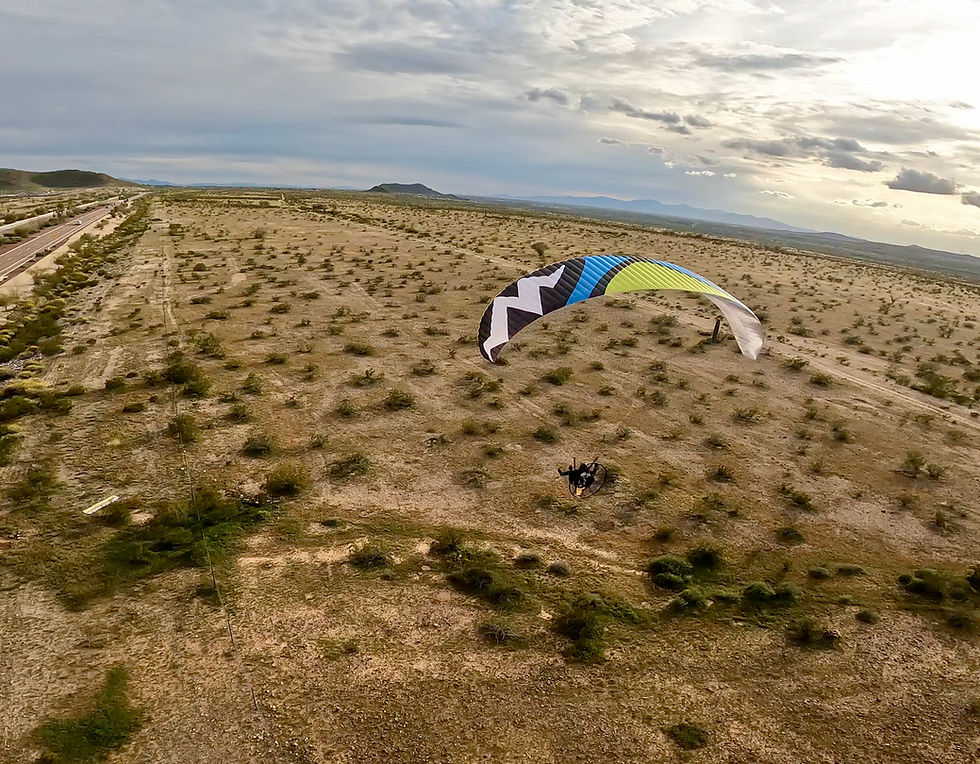What to Expect from a Paramotor Training Program
- Don Youngker
- Sep 15
- 4 min read
Paramotoring is an exhilarating way to experience flight, combining the freedom of paragliding with the power of a motor. If you are considering taking to the skies, enrolling in a paramotor learning program is essential. These programs provide the knowledge, skills, and confidence needed to fly safely and enjoyably. This article will guide you through what to expect from a paramotor learning program, helping you prepare for your journey into powered paragliding.
Overview of Paramotor Learning Programs
Paramotor learning programs are designed to teach beginners the fundamentals of powered paragliding. These courses typically cover both theoretical knowledge and practical skills. You will learn about equipment setup, safety protocols, weather considerations, and flight techniques.
Most programs start with ground school, where you study the mechanics of the paramotor, how to inspect and maintain it, and the basics of aerodynamics. This foundation is crucial for understanding how your equipment works and how to respond to different flying conditions.
Following ground school, you will move on to practical training. This includes practicing takeoffs, landings, and controlling the wing on the ground before progressing to actual flights. Training often takes place in open fields with minimal obstacles to ensure safety.
Many paramotor learning programs offer personalized instruction, allowing you to progress at your own pace. Some also provide video analysis of your flights to help you improve technique.

Key Components of a Paramotor Learning Program
A comprehensive paramotor learning program includes several key components to ensure you become a competent pilot:
Equipment Familiarization
You will learn about the paramotor engine, harness, wing, and safety gear. Understanding how to assemble and inspect your equipment is vital.
Ground Handling Skills
Before flying, you will practice controlling the wing on the ground. This helps develop your ability to manage the canopy during takeoff and landing.
Flight Theory and Weather
Knowledge of weather patterns, wind conditions, and airspace regulations is essential for safe flying.
Practical Flight Training
Under instructor supervision, you will perform your first flights. Initial flights are usually short and low to the ground, gradually increasing in duration and altitude.
Emergency Procedures
Training includes how to handle unexpected situations such as engine failure or sudden weather changes.
Post-Flight Review
After each flight, instructors provide feedback to help you improve your skills.
By covering these areas, the program ensures you are well-prepared to fly independently.

Is Paramotoring Difficult to Learn?
Many beginners wonder if paramotoring is difficult to learn. The answer depends on several factors, including your prior experience with aviation or outdoor sports, your physical fitness, and your commitment to training.
Paramotoring requires coordination, focus, and an understanding of flight dynamics. However, with proper instruction, most people can learn the basics within a few days to weeks. The learning curve is manageable because training is structured and progressive.
Some challenges new pilots face include:
Managing the wing during takeoff and landing
This requires practice to develop muscle memory and timing.
Understanding weather conditions
Flying safely depends on interpreting wind and thermal activity.
Controlling the throttle and steering
Coordinating these controls takes time but becomes intuitive with experience.
Instructors in paramotor learning programs are trained to help you overcome these challenges. They provide step-by-step guidance and ensure you build confidence gradually.
If you are patient and dedicated, paramotoring can be a rewarding and accessible sport.

Safety Considerations in Paramotor Training
Safety is the top priority in any paramotor learning program. Flying powered paragliders involves risks, but these can be minimized through proper training and preparation.
Key safety aspects covered in training include:
Pre-flight checks
Inspecting your equipment thoroughly before every flight.
Weather assessment
Learning to recognize safe flying conditions and when to postpone flights.
Emergency drills
Practicing responses to engine failure, wing collapse, or unexpected obstacles.
Use of safety gear
Helmets, reserve parachutes, and protective clothing are essential.
Flight planning
Choosing appropriate locations and times for flying.
By mastering these safety protocols, you reduce the risk of accidents and enjoy a more secure flying experience.
How to Choose the Right Paramotor Learning Program
Selecting the right paramotor learning program is crucial for your success and enjoyment. Here are some tips to help you make an informed choice:
Check instructor qualifications
Look for certified instructors with extensive experience.
Review course content
Ensure the program covers both theory and practical skills comprehensively.
Consider class size
Smaller groups often mean more personalized attention.
Look for positive reviews
Feedback from past students can indicate the quality of instruction.
Evaluate equipment quality
Training with modern, well-maintained gear enhances safety and learning.
Location and facilities
Training in open, safe areas with good weather conditions is ideal.
Post-training support
Some programs offer ongoing mentorship or advanced courses.
For example, a reputable paramotor training program offers tailored instruction, modern equipment, and a strong safety record, making it a great option for beginners.
Preparing for Your First Flight
Before your first solo flight, there are several steps to prepare:
Physical readiness
Ensure you are in good health and comfortable with the physical demands.
Mental preparation
Stay calm and focused; trust your training and instructor.
Gear check
Double-check all equipment and safety devices.
Weather confirmation
Verify that conditions are suitable for flying.
Set realistic goals
Aim for steady progress rather than perfection.
By following these recommendations, you will increase your chances of a successful and enjoyable first flight.
Paramotor learning programs open the door to an exciting new way to explore the skies. With structured training, safety emphasis, and expert guidance, you can develop the skills needed to fly confidently. Whether you want to fly for fun or pursue advanced paramotoring adventures, a quality training program is your first step toward the freedom of powered flight.






Comments